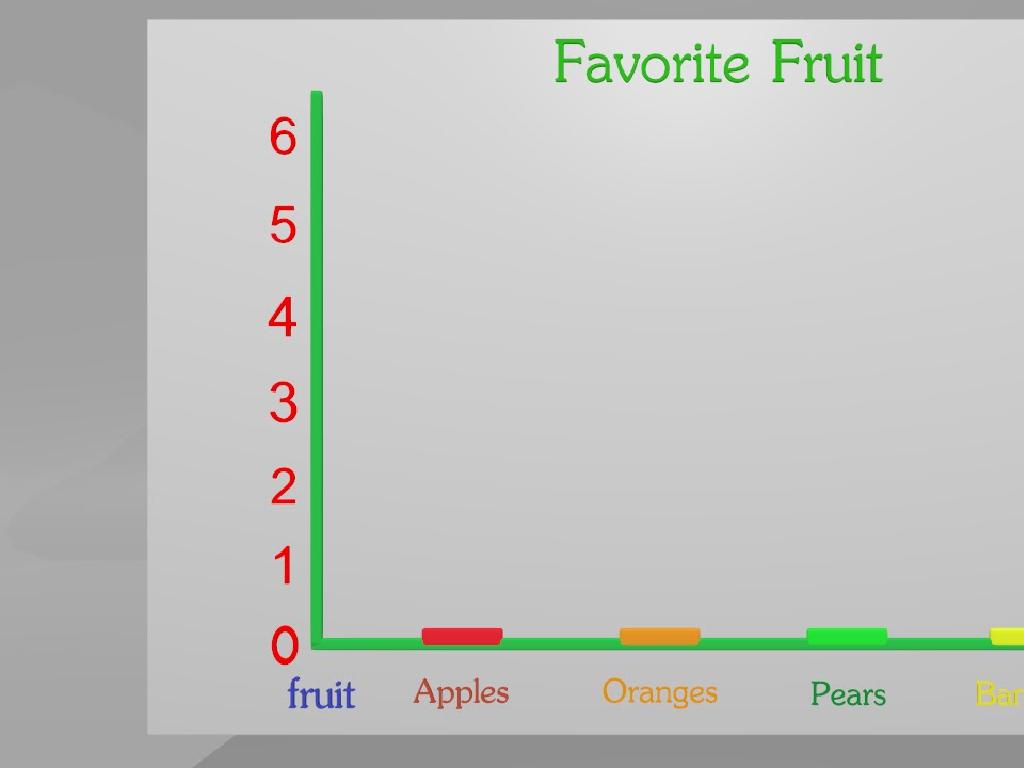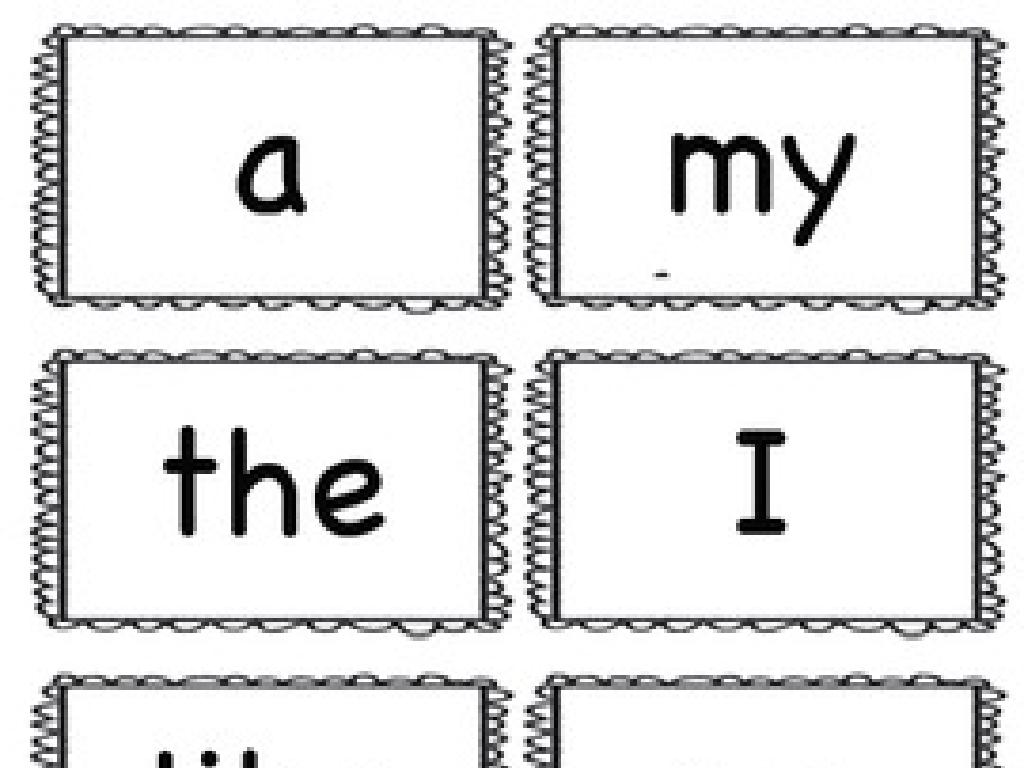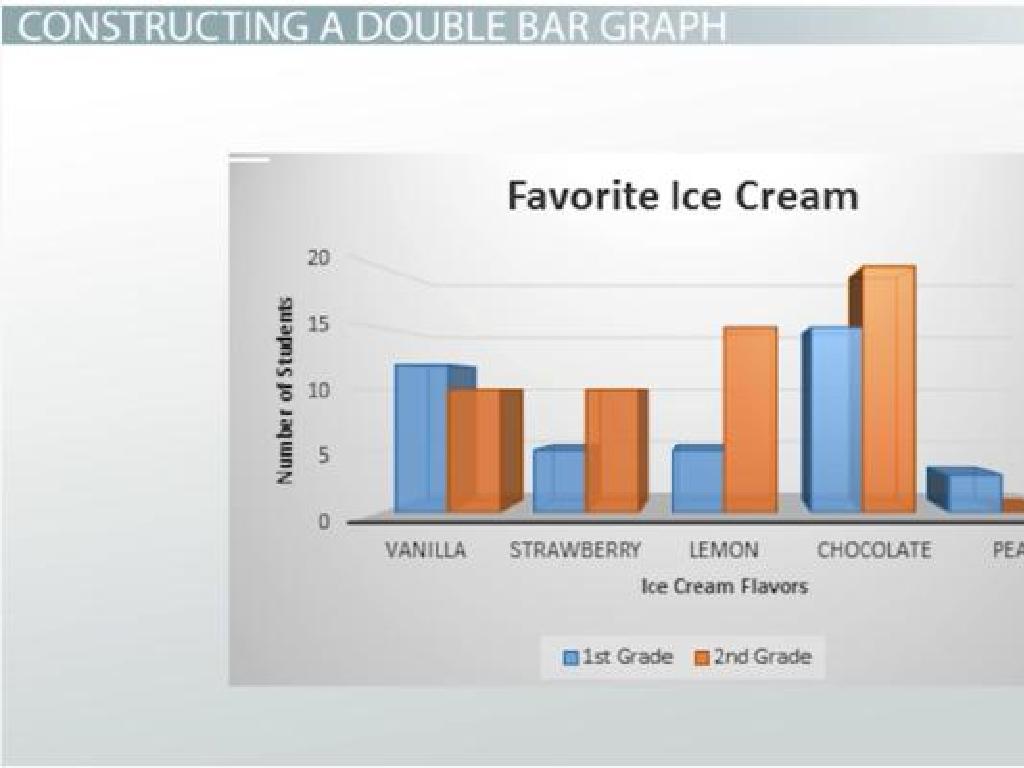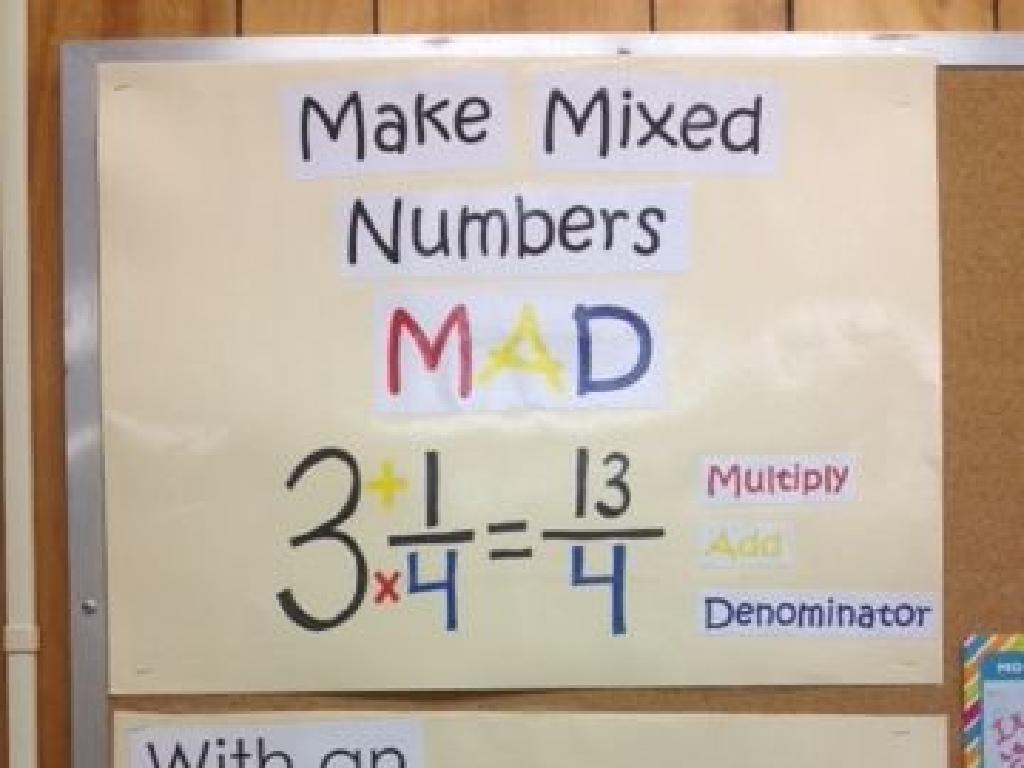Balance Subtraction Equations - Up To 18
Subject: Math
Grade: Second grade
Topic: Subtraction: One Digit
Please LOG IN to download the presentation. Access is available to registered users only.
View More Content
Welcome to Subtraction!
– Learn to balance equations
– Both sides must be equal
– If 5 – 3 = 2, then 2 + 3 must equal 5
– Practice with numbers up to 18
– Examples: 16 – 9 = 7, so 7 + 9 = 16
– Fun subtraction activities
– Use objects like blocks or counters to visualize
|
This slide introduces second graders to the concept of balancing subtraction equations. Emphasize that in a balanced equation, both sides have the same value. Use simple examples and visual aids like blocks or counters to help students understand. Practice with numbers up to 18 to ensure they are comfortable with one-digit subtraction. Incorporate engaging activities where students can apply this concept, such as solving puzzles or playing math games that require them to balance equations. This will help solidify their understanding and make learning subtraction fun.
Understanding Subtraction
– Subtraction means taking away
– Like removing items from a pile
– Numbers decrease when we subtract
– Think of it as having fewer items
– Example: 5 apples – 2 eaten
– Start with 5 apples, eat 2, how many left?
– Result: 3 apples left
– Subtract 2 from 5, and you have 3
|
This slide introduces the concept of subtraction to second graders. Subtraction is explained as the process of taking away from a total amount, which results in a smaller number. Use everyday examples, like eating apples from a group, to illustrate this point. Emphasize that subtraction is simply finding out how many things are left after some are taken away. The example provided uses a familiar context (apples) to help students visualize the subtraction process. Encourage students to think of other examples from their daily lives where they take away items from a group. This will help solidify their understanding of subtraction as a concept.
Balancing Subtraction Equations
– Equations are like scales
– Both sides must be equal
– Find the right number for balance
– If 8 – 3 is on one side, what should we put on the other?
– Example: 8 – 3 = ___
– What number makes 8 – 3 = ___ true?
|
This slide introduces the concept of balanced equations to second-grade students, using the analogy of a balance scale to help them understand that both sides of an equation must have the same value. Emphasize that when they see a subtraction on one side, they need to think about what number would make the equation true if placed on the other side. Use the example provided (8 – 3 = ___) to demonstrate how to find the missing number. Encourage students to use counters or draw pictures to visualize the subtraction and find the solution. During the class, you can have students come up to the board to fill in the blanks for similar equations, or work in pairs to solve a set of balanced equations.
Finding the Missing Number in Subtraction
– Use counting to find missing number
– Example: 8 – 3 = ?, ? = 5
– If 8 – 3 equals 5, then the missing number is 5
– Addition helps find the missing number
– Think: What number plus 3 equals 8?
– Practice with various numbers
|
This slide is aimed at helping second-grade students understand how to find the missing number in a subtraction equation. Start by explaining that counting back from the larger number can help them find the missing number. Use the example provided to illustrate this point. Then, introduce the concept of using addition to find the missing number, explaining that they can think of the equation in reverse (e.g., if 8 – 3 = 5, then 5 + 3 = 8). Encourage the students to practice with different numbers to solidify their understanding. During the class, you can have students come to the board to solve similar problems, or work in pairs to find missing numbers in a set of practice equations.
Let’s Practice Balancing Subtraction!
– Solve 12 – ___ = 7
– What number makes this true?
– Find the start: ___ – 4 = 11
– What number must we subtract 4 from to get 11?
– Use blocks or fingers
– Counting objects can help us solve equations
– Understand subtraction balance
|
This slide is an interactive class activity designed to help second-grade students practice balancing subtraction equations. The first problem encourages students to determine the missing number that makes the equation true. For the second problem, students need to figure out the starting number before 4 is subtracted to result in 11. Encourage students to use physical objects like blocks or their fingers to visually and tactilely solve the problems, reinforcing the concept of ‘taking away’ in subtraction. The goal is to solidify their understanding of how subtraction works and to ensure they grasp the concept of balancing equations. Possible activities include using manipulatives, drawing out the problems, or acting out the subtraction with movements to cater to different learning styles.
Activity Time: Balance the Equation
– Pair up to solve equations
– Use blocks for numbers
– Each block represents a number up to 18
– Find the balanced equation
– Make both sides of the equation equal
– Share and explain answers
|
This activity is designed to help students understand the concept of balancing subtraction equations by using a hands-on approach. Students will pair up, which encourages collaboration and peer learning. Provide each pair with a set of blocks, with each block representing a single unit up to the number 18. Students will use these blocks to visually represent and manipulate the numbers in their subtraction equations, making it easier for them to find the balance. After solving the equations, each pair will share their answers with the class and explain the process they used to find the balance. This reinforces their understanding and allows them to articulate their thought process. Possible activities include balancing equations such as 15 – ___ = 9, where students use blocks to find the missing number, or creating their own equations to challenge their peers.
Review: Balancing Subtraction Equations
– Subtraction means taking away
– Equations must balance
– Both sides of the equation should have the same value
– Find missing numbers
– If 5 – ___ = 3, what number makes it true?
– Use counting or addition
– Count up from 3 to 5 or add 3 + ___ = 5
|
This slide is a review of the previous lessons on subtraction and balancing equations. Subtraction is the process of finding out how much is left when a certain amount is taken away from a total. Balancing equations is a fundamental concept where both sides of the equation must have the same value. To find missing numbers in a subtraction equation, students can use counting or addition as strategies. For example, if the equation is 5 – ___ = 3, students can count up from 3 to 5 or think about what number added to 3 equals 5. During the class, engage students with examples and encourage them to solve equations using these methods. This reinforces their understanding of subtraction as well as the concept of equality in equations.
Class Activity: Subtraction Bingo
– Play Subtraction Bingo!
– Solve subtraction problems on your card
– Find problems like 15 – ___ = 10, what’s the missing number?
– Mark solved problems
– Aim for five in a row to win
– Remember to balance the equation to find the answer
|
This interactive activity is designed to help second graders practice and reinforce their subtraction skills in a fun and engaging way. Set up the bingo cards with subtraction problems that have solutions up to 18. Guide the students on how to solve the problems and check for understanding of balanced equations. As students solve the problems, they mark off the corresponding spots on their bingo cards. The first student to get five correct answers in a row (horizontally, vertically, or diagonally) calls out ‘Bingo!’ and wins. Possible variations of the activity could include using different bingo patterns, such as ‘four corners’ or ‘full card’, or having students create their own bingo cards with subtraction problems for added challenge.






